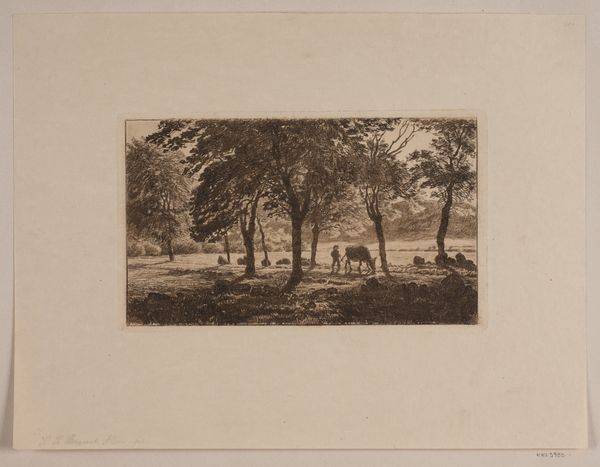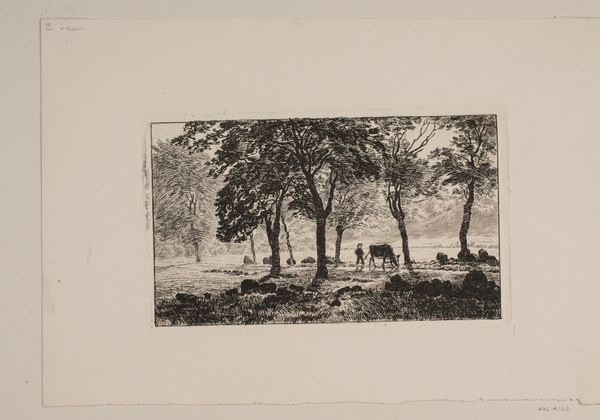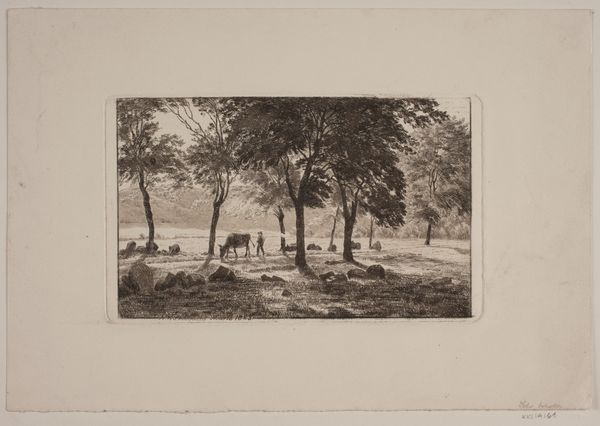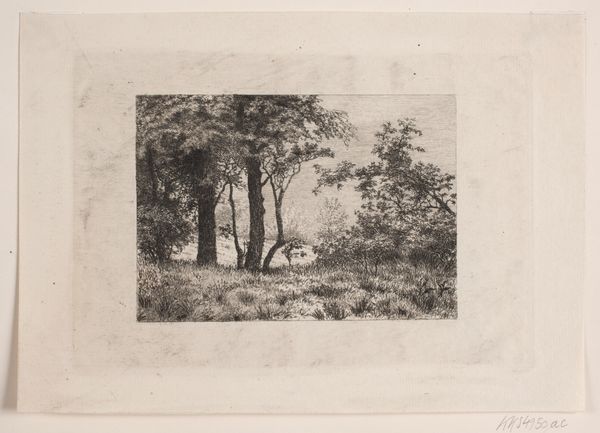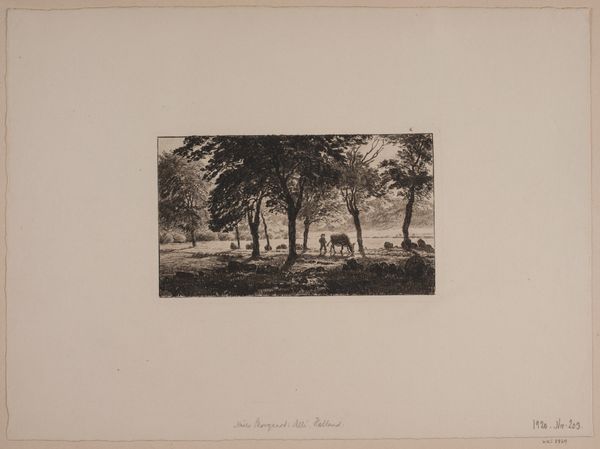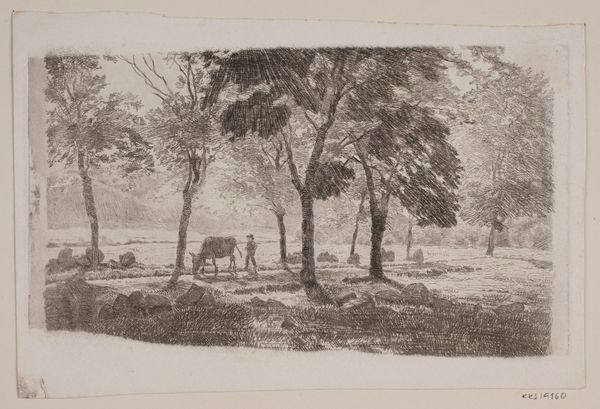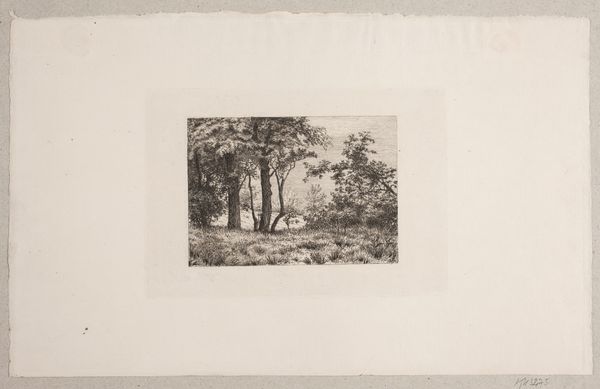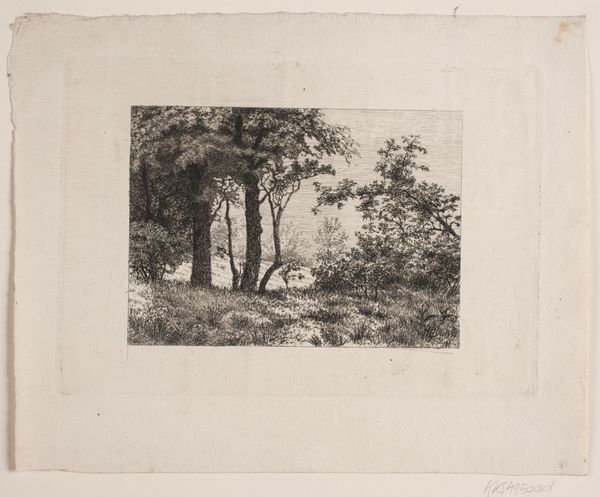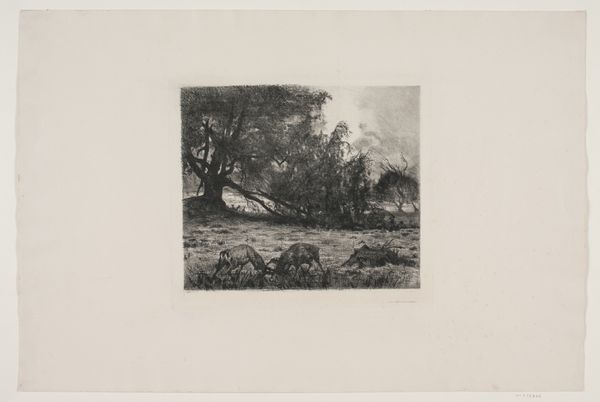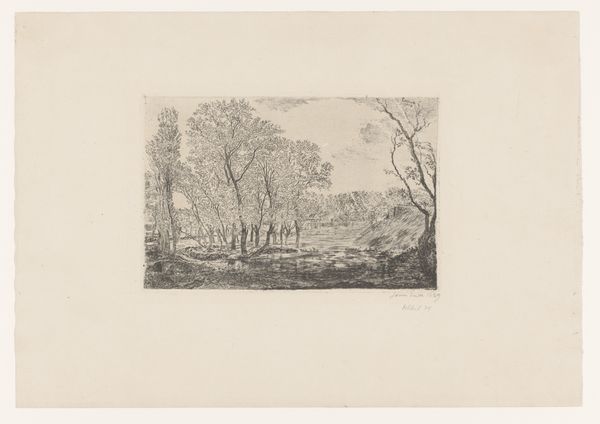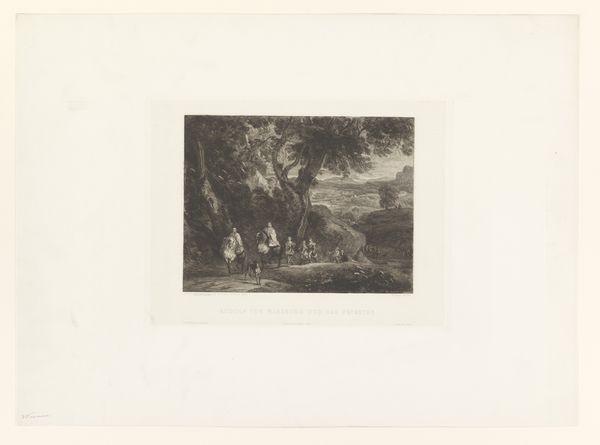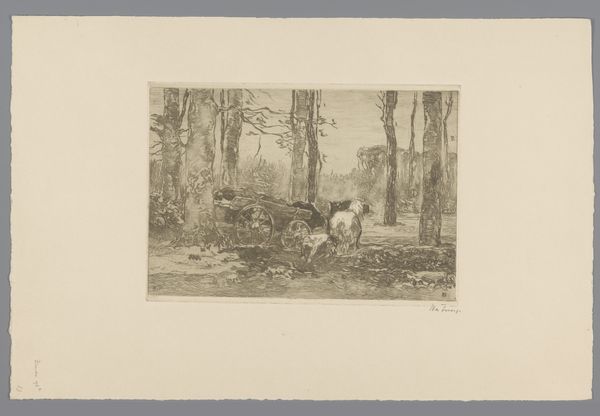
print, etching
# print
#
etching
#
landscape
#
charcoal drawing
#
genre-painting
#
realism
Dimensions: 122 mm (height) x 207 mm (width) (Plademål)
Curator: Immediately, I feel a deep sense of quietude emanating from this landscape. The light is soft, the scene peaceful... almost melancholic. Editor: Indeed. This etching, "Alléen" by Niels Skovgaard, completed in 1899, captures precisely that sensibility. It is currently held at the SMK, the Statens Museum for Kunst. Skovgaard's engagement with realism situates him firmly within the historical currents of his time. Curator: And that realism lends a stark quality to this work. The figure walking with their cow becomes an almost allegorical representation of human labor, a quiet negotiation with nature, wouldn't you say? Editor: Certainly. The pastoral subject matter would resonate with the growing urban population's anxieties about the industrial revolution, no doubt. Think about the social and cultural disruptions of the time, with massive population shifts, urbanization... this image offered an idyllic alternative. Curator: It also brings into question the role of labor and rurality, as those are continuously impacted by shifting environmental changes as well. How does this seemingly innocent portrayal engage in some degree of environmental advocacy, whether directly or subconsciously? Editor: That's an insightful connection. We often interpret works of art such as this within the confines of aesthetics or social critique, but considering the ecological implications broadens the scope. It is an age defined by significant expansion fueled by natural resources. And, like so many, Skovgaard’s livelihood relies on landscape and nature as the main subjects of their artistic craft. Curator: Skovgaard positions us as viewers observing both humanity and nature in tandem, prompting introspection regarding the historical complexities interwoven within this image. By engaging these perspectives, we can start deconstructing cultural narratives within and outside of artistic representation. Editor: A vital intervention. By analyzing historical context, but also by questioning ingrained notions, we gain access to much richer discussions about the politics of imagery. Curator: Yes, there’s a certain critical weight carried within Skovgaard’s seemingly gentle pastoral scene—one that certainly warrants continuous inspection and evaluation. Editor: Precisely, and situating the work in its historical framework only enriches our ability to explore those pressing social issues even now.
Comments
No comments
Be the first to comment and join the conversation on the ultimate creative platform.
